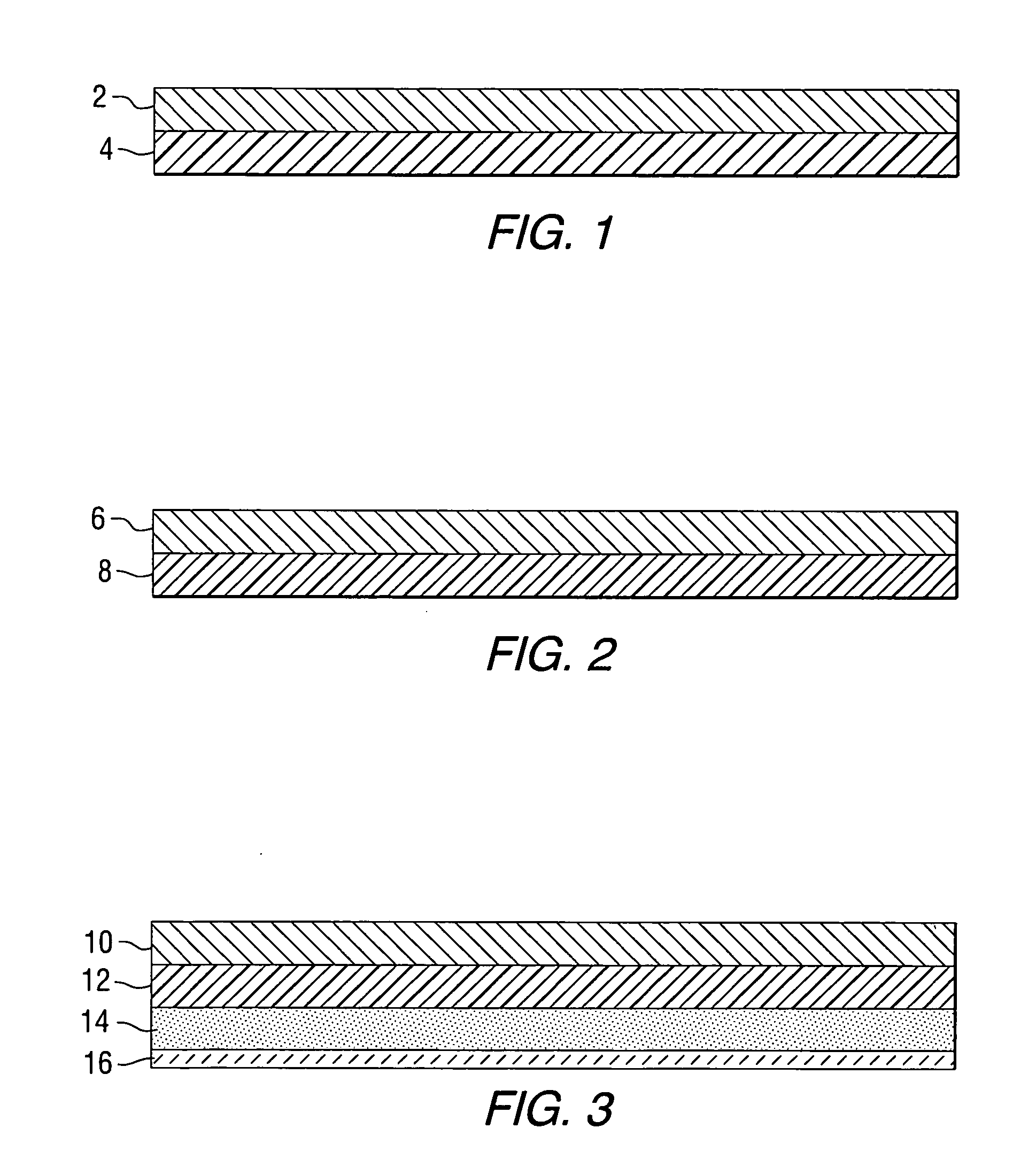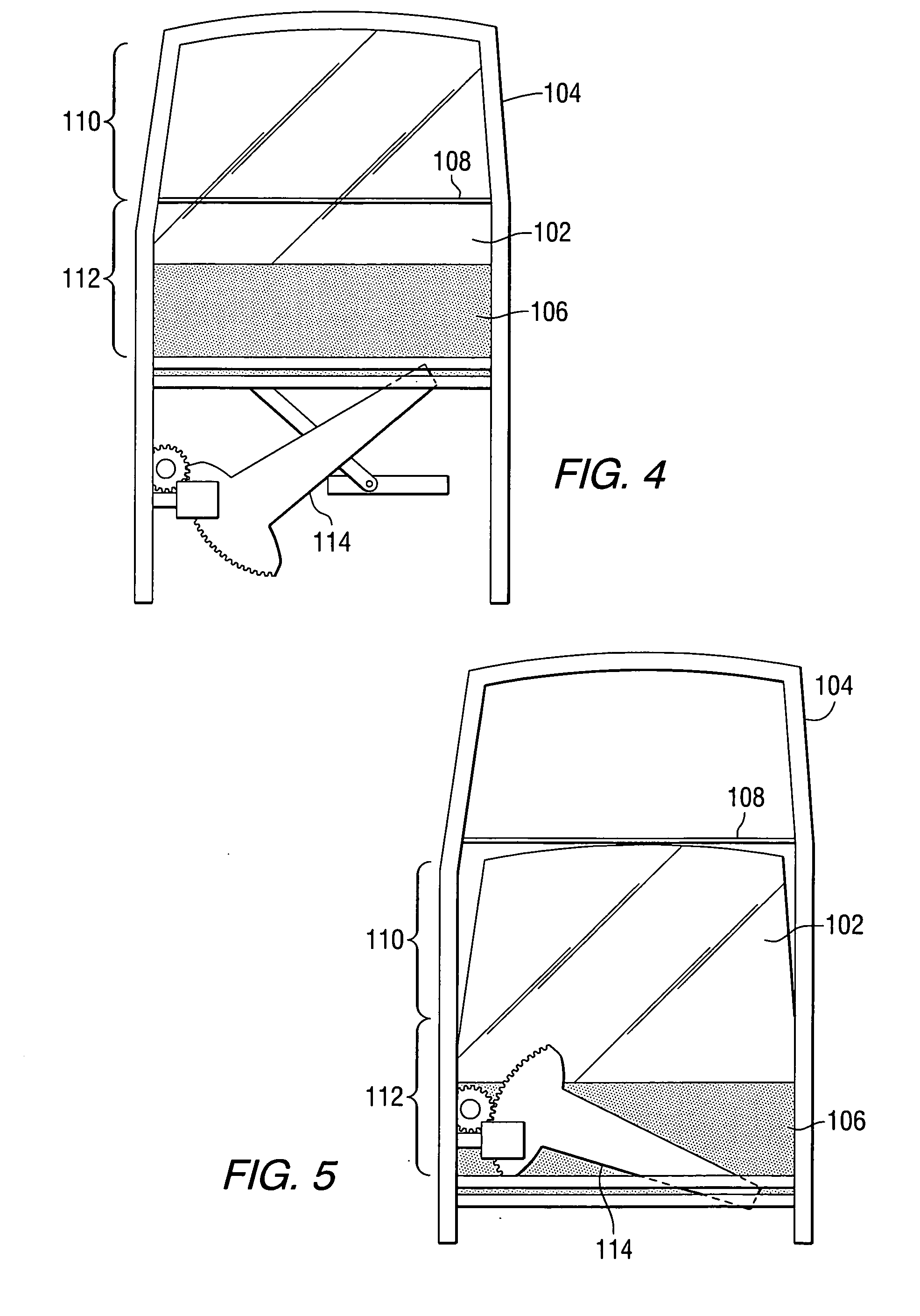Methods for applying sound dampening and/or aesthetic coatings and articles made thereby
- Summary
- Abstract
- Description
- Claims
- Application Information
AI Technical Summary
Benefits of technology
Problems solved by technology
Method used
Image
Examples
example 1
[0147] A polyurea composition was produced from the formulation of Example 1 in Table 1 by mixing a 1:1 volume ratio of the A-side components to the B-side components in a high-pressure impingement mixing device manufactured by Gusmer Corporation.
[0148] The A-side components were premixed and charged into one holding chamber of the mixing device. The B-side was prepared by preparing a prepolymer by mixing the IPDI, terathane, butanediol, and neopentyl glycol under nitrogen. A catalytic amount of dibutyl tin dilaurate (DBTL) was added and the mixture was stirred for 15 minutes. The reaction mixture was first heated to 40° C. and then to 100° C. The resulting prepolymer was cooled to 80° C. and poured into 95% of the Desmodur N3400 and stirred for 15 minutes. Additional Desmodur N3400 was added to adjust the isocyanate equivalent weight.
[0149] The ratio of equivalents of isocyanate to amine was calculated as being 1.04.
[0150] Another polyurea composition was produced from the formu...
example 2
[0202] The polymeric materials were prepared in a four neck round bottom flask equipped with a thermometer, mechanical stirrer, condenser, nitrogen sparge and a heating mantle. The ingredients used to prepare each of Samples 1-5 and Comparative Sample 1 are shown in Table 2.
[0203] Water and a small portion of the methyl methacrylate and butyl acrylate were charged to the reactor with a small amount of ALIPAL surfactant and ammonium persulfate free radical initiator to form a seed. A preemulsion of the remaining monomers, surfactant and water were fed along with the initiator over a prescribed period of time (3 hours) at a reaction temperature of 80-85° C. using a nitrogen blanket. After a one hour hold, upon completion of the monomer feed, a post redox feed to reduce residual free monomer (including hydrogen peroxide / isoascorbic acid) was added to the reactor. The latex was neutralized to a pH of about 8 with dimethylamino ethanol. The final pH of each of the latices was about 7.5-...
example 3
[0243] As shown in Table 4, several adhesive coating compositions were prepared and evaluated as is detailed below. The coating compositions of Table 4 were prepared by blending the ingredients (shown in Table 4) together in a one gallon sigma mixer with liquids being slowly added to powders in the mixing chamber until finished compositions were obtained. The coating compositions of Table 5 were prepared by blending the ingredients (shown in Table 5) together in pint cans with impeller blades until finished compositions were obtained. The values in brackets, [ ], indicate percentage of each component based upon total resin solids. Each composition was tested for physical properties as follows.
[0244] Lap shear bonds for testing were prepared using two strips of cold rolled steel having dimensions of 25.4 mm by 101.6 mm by 1.57 mm (1 inch by 4 inches by 0.062 inches). For each composition, a film was applied to one of the metal strips. Several glass microbeads, each having a thicknes...
PUM
| Property | Measurement | Unit |
|---|---|---|
| Temperature | aaaaa | aaaaa |
| Temperature | aaaaa | aaaaa |
| Length | aaaaa | aaaaa |
Abstract
Description
Claims
Application Information
 Login to View More
Login to View More - R&D
- Intellectual Property
- Life Sciences
- Materials
- Tech Scout
- Unparalleled Data Quality
- Higher Quality Content
- 60% Fewer Hallucinations
Browse by: Latest US Patents, China's latest patents, Technical Efficacy Thesaurus, Application Domain, Technology Topic, Popular Technical Reports.
© 2025 PatSnap. All rights reserved.Legal|Privacy policy|Modern Slavery Act Transparency Statement|Sitemap|About US| Contact US: help@patsnap.com



